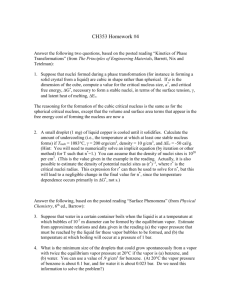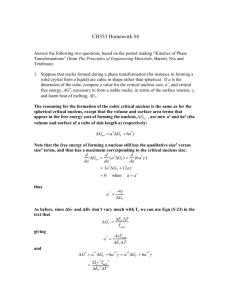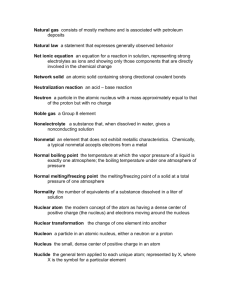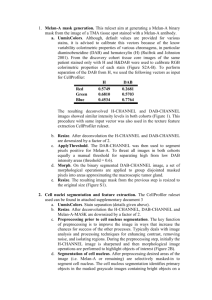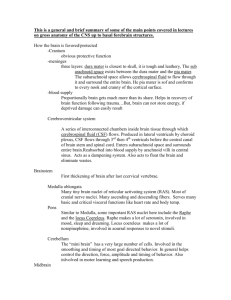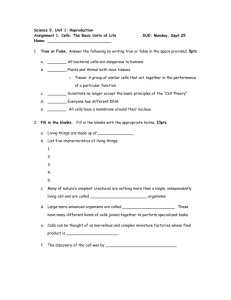Nuclear
advertisement
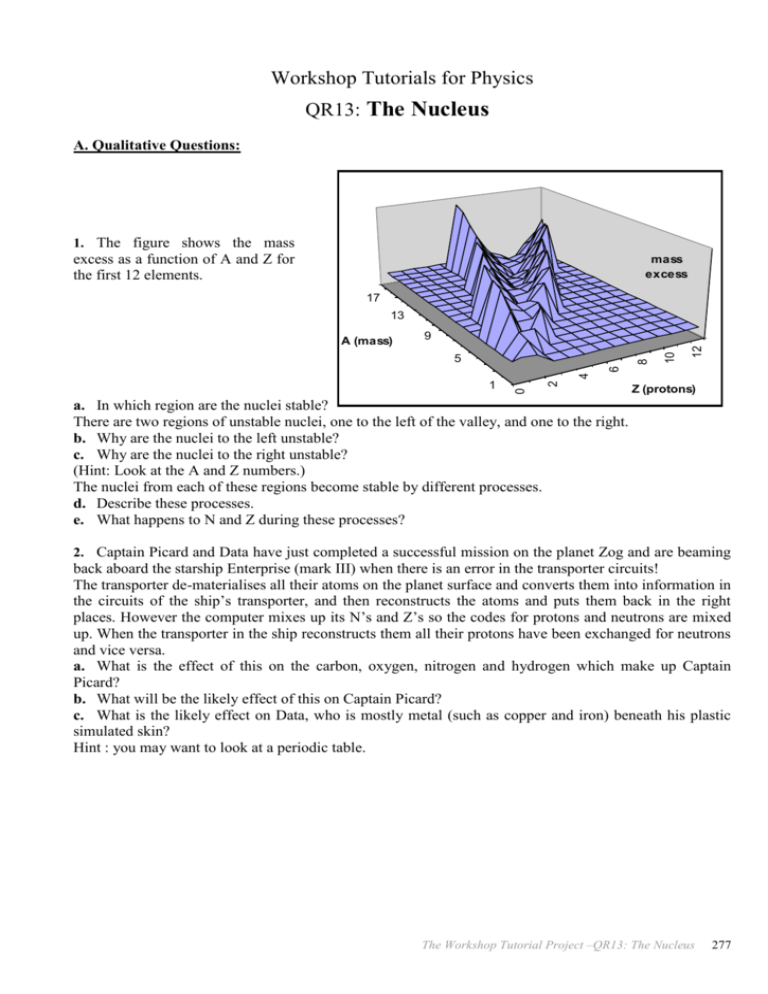
Workshop Tutorials for Physics QR13: The Nucleus A. Qualitative Questions: 1. The figure shows the mass excess as a function of A and Z for the first 12 elements. mass excess 17 13 9 0 1 2 4 6 8 5 12 -10000 10 A (mass) Z (protons) a. In which region are the nuclei stable? There are two regions of unstable nuclei, one to the left of the valley, and one to the right. b. Why are the nuclei to the left unstable? c. Why are the nuclei to the right unstable? (Hint: Look at the A and Z numbers.) The nuclei from each of these regions become stable by different processes. d. Describe these processes. e. What happens to N and Z during these processes? 2. Captain Picard and Data have just completed a successful mission on the planet Zog and are beaming back aboard the starship Enterprise (mark III) when there is an error in the transporter circuits! The transporter de-materialises all their atoms on the planet surface and converts them into information in the circuits of the ship’s transporter, and then reconstructs the atoms and puts them back in the right places. However the computer mixes up its N’s and Z’s so the codes for protons and neutrons are mixed up. When the transporter in the ship reconstructs them all their protons have been exchanged for neutrons and vice versa. a. What is the effect of this on the carbon, oxygen, nitrogen and hydrogen which make up Captain Picard? b. What will be the likely effect of this on Captain Picard? c. What is the likely effect on Data, who is mostly metal (such as copper and iron) beneath his plastic simulated skin? Hint : you may want to look at a periodic table. The Workshop Tutorial Project –QR13: The Nucleus 277 B. Activity Questions: 1. Binding energies Examine the chart of binding energies. a. What does the diagram represent? Fission and fusion are opposite processes, when fission occurs a nucleus breaks apart and when fusion occurs two nuclei fuse to form a larger one. b. How can both these processes release energy? c. Which nuclei are more likely to undergo fusion? Which will undergo fission? Explain your answer. 2. Coolite Balls Charge the coolite balls so that they have opposite charges. What happens? Now charge them so they have like charges and observe what happens. What would happen to nuclei if there wasn’t a strong nuclear force to hold them together? C. Quantitative Questions: 1. The effective radius of a nucleus can be calculated using R = RoA1/3 where Ro = 1.2 fm = 1.2 10-15m, and A is the atomic mass number of the nucleus, 197 for gold. a. Calculate the size of a gold nucleus. b. If a 5.3MeV particle is headed directly for a gold nucleus, how close will it get to the centre of the nucleus before it is deflected and scattered back? (Hint: when does the potential energy due to Coulomb repulsion become equal to the kinetic energy?) c. Using your answers to a and b, comment on the likelihood of hitting the nucleus with a neutron compared to an alpha particle. A thought experiment, or something to try on an oval: imagine making a model of a sheet of atoms with nuclei 1 cm in diameter (marbles, for example), and spacing them so that the atoms were just touching. How hard would it be to hit the nuclei with thrown marbles from several atomic radii away? 2. A deuteron (a proton and a neutron) has a binding energy of 2.22 MeV = 3.55 10-13J. a. What is the binding energy per nucleon for a deuteron? b. By how much is a deuteron lighter than a proton plus a neutron? c. How much energy is released when two hydrogen nuclei and two neutrons fuse to form a helium nucleus in the sun ? d. How much energy is released when uranium232 decays into a thorium228 nucleus and a helium nucleus? e. Comment on your answers to c and d. Some useful masses: proton neutron H Particle 1.008665 1.0107276 Mass (amu) 1.007276 -27 1amu = 1.66054 10 kg = 931.3 MeV/c2. 278 The Workshop Tutorial Project –QR13: The Nucleus He 232 4.002603 232.0371 U 228 Th 228.0287




